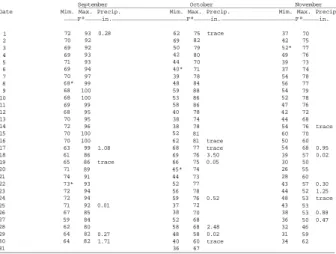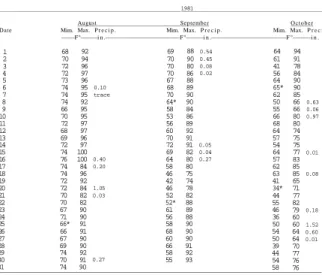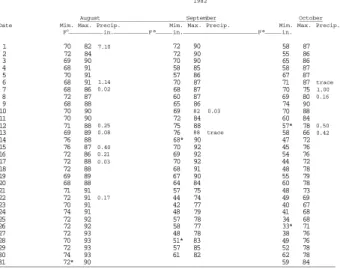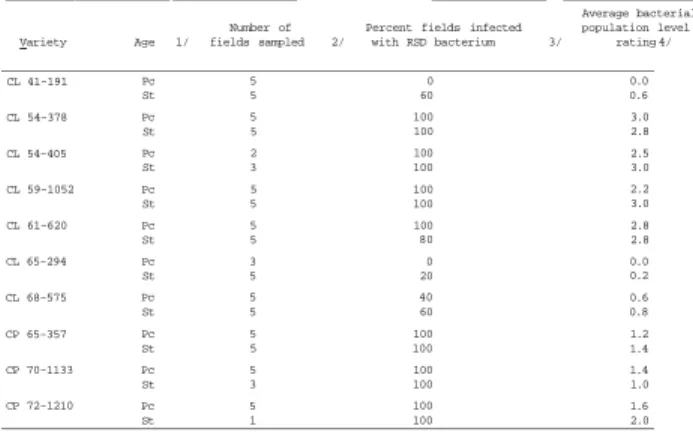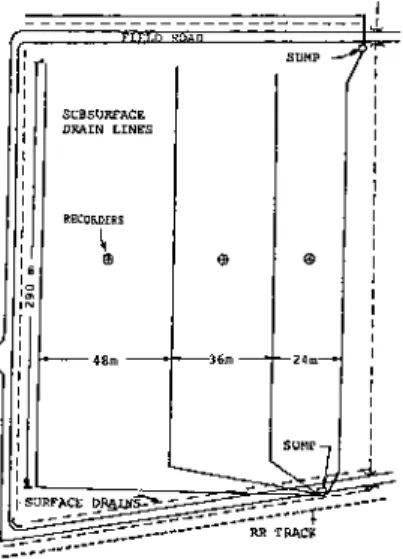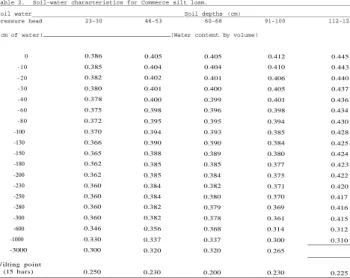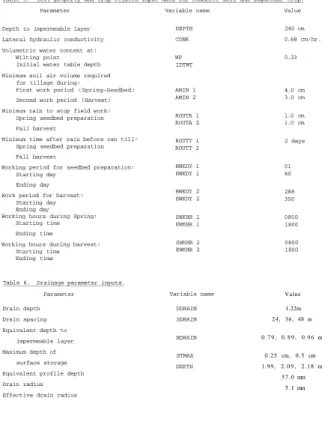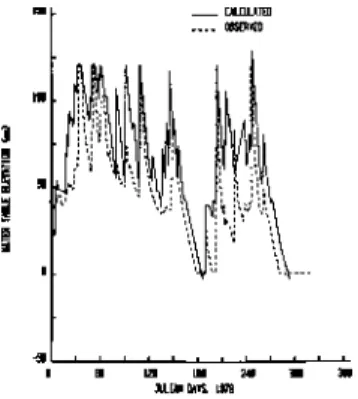47 Sugarcane Fruit Control Strategy in the State of Tucuman, Argentina: Initial and Current Disease Studies. The research department of the United States Sugar Corporation in Clewiston is active in the fields of sugarcane breeding, plant nutrition, entomology, plant pathology, and chemistry. The Louisiana Chapter welcomes you as hosts to the 13th Annual Joint Meeting of the American Association of Sugarcane Technologists.
In addition to observation of diagnostic bacteria by phase contrast microscopy, periodic isolations of RSD bacteria were made in SC medium (1). All ten commercial varieties surveyed were infected to varying degrees by the RSD bacterium. However, the number of undamaged and non-germinated root primordia showed that damage to primordia generally increased with increasing levels of corn borer infestation.
Often shoots that emerged were then killed by wireworm damage to the underground portion of the stem. Three wireworms/1.5 meters may be close to the level at which control costs are justified (ie the economic injury level). More research on damage thresholds of the maize wireworm as well as on economic damage caused by this pest is needed.
The depth of the water table for a given upward flux was determined as the z value where h = 0.
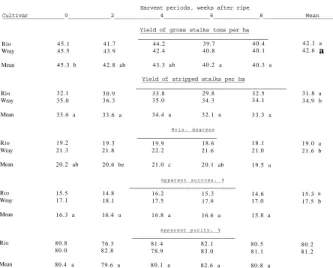
AMIN 2
The percentage of predicted base elevations that fell within + 2 0% of the observed elevations ranged from 80 to 97.2%. Over 67% of the predicted results were within + 1 0% of the observed values for the four cases analyzed. Significant correlations of and 0.90 were obtained in the first, second and third stubble crops of the natural infection test, respectively.
These plants were sampled at two-week intervals and the number and development rate of insects monitored. Seventy-six percent of the eggs hatched by the first sampling date, 23 Jul 79 (26 days post-infection). They show that most of the life cycle of this species is spent in the third instar.
The subsequent yield of this cane can be affected by the timeliness of the removal process. On January 12, 1982, most of the sugarcane in Florida was killed by frost, and unusually warm weather followed for the rest of the crop. Visual observations of growing cane showed no differences in cane growth between removal treatments.
During the cultivation in June, more old stems appeared to be broken than during the cultivation in May. The yield of the subsequent harvest was higher than that of the destroyed crop. The success of control depends on the integral application of the different aspects.
The results of the percent reduction in THC at the six locations where soot levels were zero or near zero are shown in Table 3. For the intermediate and sensitive cultivars, the reduction in THC was very similar to that of the resistant cultivars. The undisputed success of early sugarcane breeders in controlling SMV was a textbook example of realizing the full potential of breeding to control disease.
The full disease control potential ie. the apparent elimination of the disease with resistant cultivars was not realized to control SMV in Louisiana a second time. Stanford and Ayers (17) recommended that only a small proportion of nitrogen fertilizer be applied during the establishment period of the 24-month cane crop.
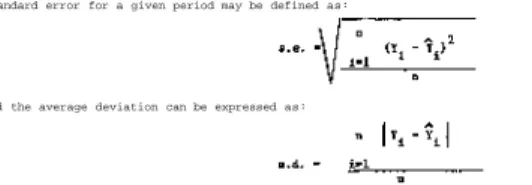
Cane and sugar yields of cultivar CP 65-357, although not significantly affected by P fertilization, were slightly lower than yields without P fertilizer (Table 6. The lack of response to P was surprising because a low soil test with NaHCO3- extractable P (4.9 ppm) suggested This was a likely response, and leaf P concentrations of 0.15% during the fourth month of growth were below the critical value of DuToit (6) and Evans (7). Furthermore, neither leaf P concentration nor sap P content (Table 9) were increased by P fertilizer application.
Effect of N and P fertilization on sugarcane and sugar yields and juice quality of cultivar CP 65-357 on Willacy fine sandy loam. Nitrogen fertilization significantly affected three components of yield: stem girth, stalk weight and the plant population. The vegetative growth index, expressed as the green weight of pods, is associated with stem girth (4) and can be used to monitor the effects of soil moisture or N fertilization on sugarcane growth.
The maximum growth rate of sugarcane, as indicated by the vegetative growth index, occurred early in the season and was influenced by N availability (Figure 4). The highest correlation (r = 0.88**) between the final yields of CP 52-68 and the Vegetative Growth Index was obtained during the fifth month of growth. The reduction in the millable stem population of NCo 310 between the first and second cultivation was 33.5% without N, and 18.2%.
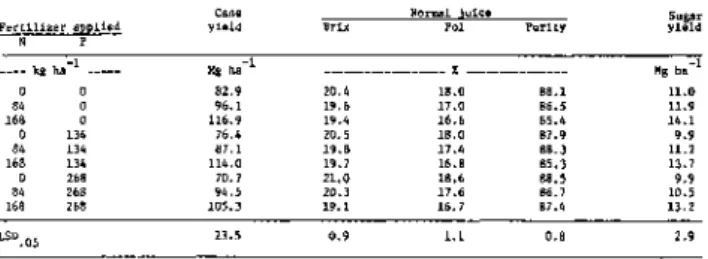
LEAF SCALE REMOVAL AND SUSCEPTIBILITY TO BLEAK INFECTION IN UPPER SUGAR CANE. In LOUISIANA STATE UNIVERSITY (LSU) SUGAR CANE BREEDING PROGRAM Keith P. Bischoff, Joey P. Quebedeaux, and Fred A. Martin. In 1982, the latest improvements in sugarcane seedling production were introduced at LSU.
Louisiana State University Agricultural Center, Baton Rouge, Louisiana Traditional sugarcane cultivation in Louisiana involves three successive sugarcane crops, followed by field restoration and new planting. The contact toxicity of 10 insecticides was measured for third instar larvae of the sugarcane larvae Ligyrus subtropicus Blatchley. Experiments with a hay crimper indicated that the stem parts of the sugar cane tops could be dried in the field in half the time.
The occurrence of ratoon stunting disease bacteria in sugarcane appears to be very widespread in Florida. This study examined the expression of yield components in ratoon crops of sugarcane progeny from the cross CP 65-357 x L 65-69. Sugarcane (Saccharum spp.) declines in tonnes per hectare of sugar (THS) over time after a killing freeze.
FIELD STUDIES OF CANE FIELD ANTS AND THEIR RELATIONSHIPS TO THE SUGAR CANE BORE AND ITS CONTROL W. EVALUATION OF SUGAR CANE CLONES FOR RESISTANCE TO THE SUGAR CANE BORE IN FLORIDA Omelio Sosa, Jr., Research Entomologist. Thirty sugarcane clones were evaluated for resistance to the sugarcane borer in a replicate field trial.
IMPROVING PERFORMANCE AND CAPACITY IN THE CLARIFICATION OF SUGAR CANE JUICE P. Process Technology, Eimco Process Equipment Company Salt Lake City, Utah. Later in the season, the calculation of the molasses stock was added to the system. RULES FOR THE PREPARATION OF PAPERS TO BE PRINTED IN THE JOURNAL OF THE AMERICAN SOCIETY OF SUGAR CANE TECHNOLOGISTS.

